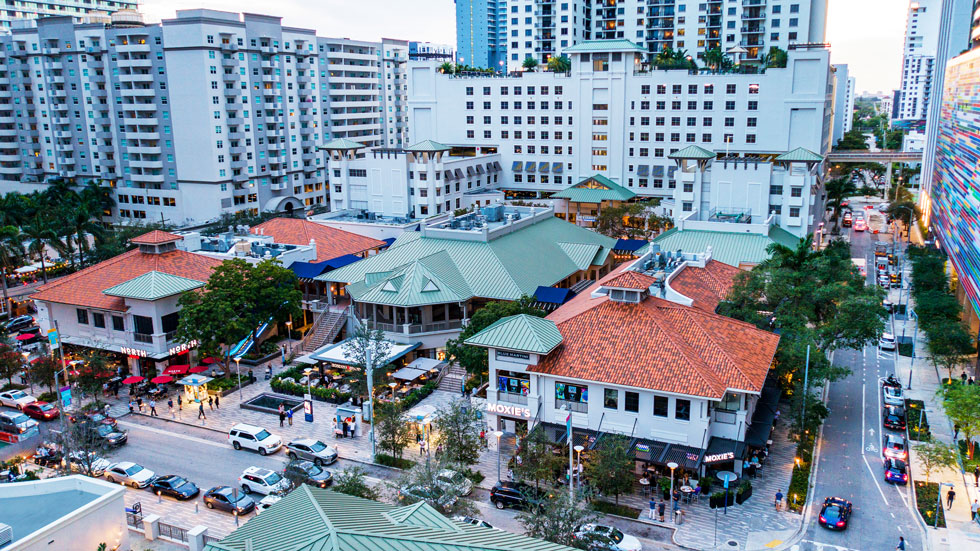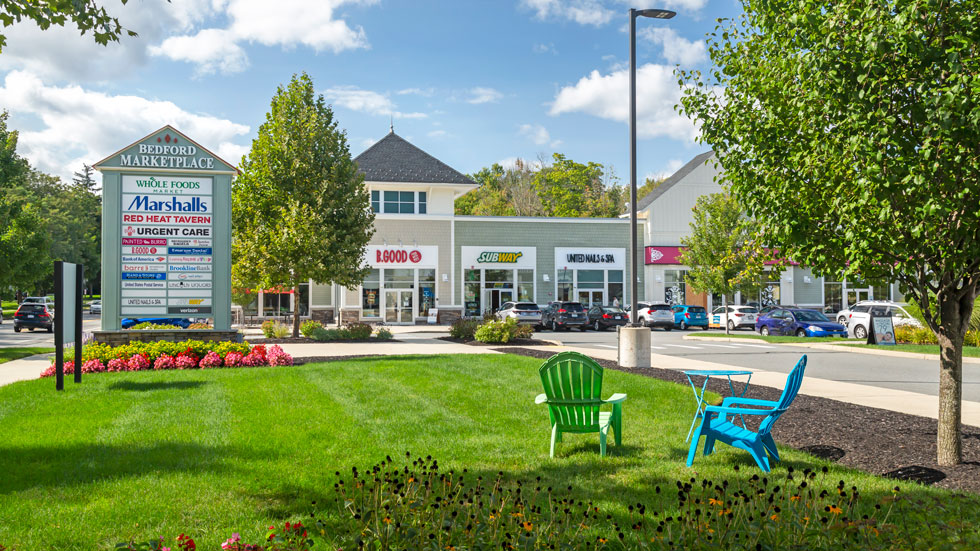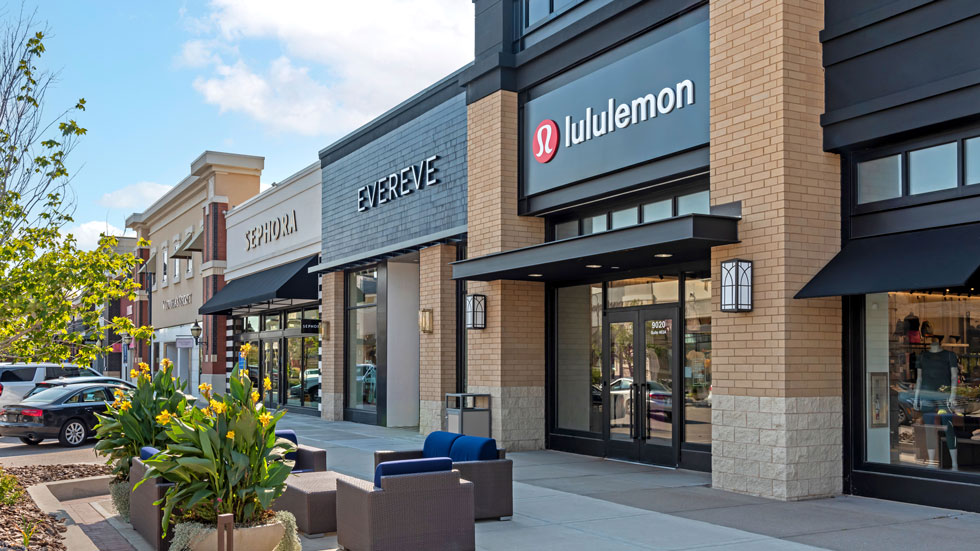For Brian Harper, president and CEO of RPT Realty (NYSE: RPT), success in the retail real estate business has come about by combining his professional experience with the lessons and perspective he has gained in his personal life that have enabled him to see talent and opportunity that others might miss.
Harper has served in his current role since June 2018, when the REIT was then known as RAMCO Properties. Shortly after he came onboard, RAMCO rebranded and undertook a new strategic direction and organizational culture. Harper had previously served as CEO of Rouse Properties.
Harper says he is lucky to have found a career for which he has true passion. While there are challenges in any profession, “the majority of the work is something I truly relish and am just extremely thankful for every day.” Along with the value creation that comes from real estate, he says he is rewarded by “leading people and really seeing them flourish. This is a people business.”
Another passion for Harper is his involvement with Autism Speaks, where he has been chairman of the non-profit organization since April 2020. He joined the board in 2017, inspired by his son Caleb, who has autism.
Harper recalls the challenges of taking over the chair position at the height of the pandemic, a time when all the normal support systems that are so vital for autistic children were unavailable. While the sheer intensity of those pandemic days has subsided, the urgency of the mission has not. “We’re on the one-yard line, with 99 yards to go…but I am hopeful and optimistic for the future,” he says.
Harper spoke to REIT.com about the changes that have been underway at RPT during the past few years, as well as the enormous benefits to corporate culture and success that can come from including neurodiverse individuals in the workforce.
What is the state of play across the retail real estate landscape today?
Operational fundamentals are extremely strong, with no new supply and robust tenant demand. However, equity valuations in the retail REIT space today are not built on fundamentals and are instead driven by the current macro environment. At RPT, for example, we have dramatically improved the quality of our properties and market exposures over the past several years, and these changes have not been reflected in our current price.
At the property level, really very little is being traded given reduced equity valuations and lack of debt funding. This is especially true for anything over $50 million; those deals are very few and far between right now.
How do RPT’s three investment platforms enable you to be responsive to changing market dynamics?
Our three investment platforms that focus on multi-tenanted shopping centers, grocery-anchored shopping centers, and net lease assets are really built for times of disruption like this. They enable us to strike faster, to execute at better returns, and they expand the breadth of potential deals we can invest in versus other potential buyers.
Our grocery anchor and net lease joint ventures combined have over $1.7 billion of remaining committed capital to deploy. This is an arrow in our quiver that not a lot of other buyers in this environment have, giving us significant optionality. Our platforms also give us the ability to acquire larger portfolios of properties with different risk-return profiles and to allocate the properties across our platforms. We can take advantage of value dislocations across the retail real estate ecosystem, such as single versus multi-tenant, essential versus non-essential, and large versus small deal sizes, while simultaneously enhancing yields via these arbitrage opportunities with management fees.
How has RPT gone about selecting the geographic markets it is most active in today, and do you see the footprint changing?
In order, Florida and Boston are our most active markets. I could see Boston moving to number one by annualized base rent or ABR relatively soon, after having had no exposure in Boston pre-2020. We now generate 22% of our ABR from Florida, with over 50% of the company’s value now derived from Boston, Atlanta, Nashville, and Florida. We like all those markets a lot. Moving forward we expect to keep expanding in those target markets, diversifying our cash flows into higher growth and higher quality locations.
We’ve modernized our approach towards capital allocation by combining advanced data analytics with the real estate expertise of our senior leadership. We have an in-house data scientist who works with teams across the company and has developed a proprietary asset scoring model that combines a wide range of factors to rank markets based on their potential for investment. Factors include demographics, market rank, growth, tenant quality, foot traffic, spending data, employment data, and climate risk, just to name a few. There’s over a hundred inputs now and that is just another tool in our toolbox as we’re making capital decisions.
Is Mary Brickell Village in Miami something of a departure from RPT’s earlier strategy, and what potential do you see with this development?
The grocery-anchored platform that we established with GIC Private Ltd. was really set up to acquire core high quality assets in primary markets across the country. And Mary Brickell really reflects that focus on acquiring the best quality real estate at the highest internal rates of return.
Mary Brickell is a trophy asset whose acquisition was only made possible due to our investment platforms and our relationship with GIC. In just nine months, we’ve already seen absolutely incredible growth. This is a $45 per square foot ABR center in a market that’s getting $150 rents. The asset is now 94% leased and market rents have really surpassed what we initially underwrote. We’ve also been working with the Miami office of Gensler [a leading architecture firm] to reimagine and master plan the site for years to come.
The site right now is zoned for up to 4.1 million square feet of retail, residential, hotel, or multifamily, giving us significant value creation optionality as we determine the best path going forward and the highest return for our shareholders. Recent land comps in the Brickell neighborhood show one transaction traded at $145 million an acre versus our acquisition price of $42 million an acre just nine months ago. So we are extremely excited with this purchase; this will be a very good long-term holding for RPT and GIC.
What does RPT’s tenant mix say about what consumers are looking for today?
About 86% of our tenant base are national and regional retailers and a large majority are necessity based and/or investment grade. Today’s consumers are seeking out their favorite brands, restaurants, and necessity goods through a multitude of in-person and digital mediums that are all interwoven to create that modern day retail omnichannel experience.
Having a storefront today is very advantageous for all types of retailers and is the highest internal rate of return and profit center for them. Additionally, work from home has created an entirely new demand channel from professionals seeking out local spaces for work, goods, recreation, and entertainment.
We also now have significantly improved data on traffic patterns that allow us to better curate a mix of tenants that have natural customer synergies when we’re in the place making business. Finding that right merchandise mix is critical to the immediate, as well as the long-term success of each center.
Is there more potential to incorporate housing into the shopping center model today?
I absolutely think we’ll see more given the rise of the suburbs and the work from home structural shift; people are more connected to the local shopping centers than ever in my career.
This includes multifamily housing built on the grounds of shopping centers where residents can enjoy ease of access to grocery offerings, their favorite coffee shop, or to the Lululemon store. In late 2021, for example, we entered a joint venture to build a roughly 300 unit multifamily property on undeveloped raw land next to one of our centers, Parkway Shops in Jacksonville, Florida.
So, we’re contributing that land and writing a check for $500,000 for roughly a 50% equity stake in the venture. Multifamily represents the highest and best use for that particular land, where we can maximize the value creation potential.
There’s a lot more potential, particularly in Florida, Boston, and Nashville, where we can do similar type arrangements with several leading multifamily developers or owners across the country. Mary Brickell Village is a significant densification opportunity for residential, and we’ll continue to think creatively about every single one of our properties and choose projects that just deliver the best return to shareholders and will also be the best long-term fit for our real estate.
April is Autism Awareness Month and given your personal involvement with this cause, can you speak to the importance of advancing neurodiversity within the workplace?
As a dad of a 17-year-old son, Caleb, who is autistic, I am deeply passionate about seeing my son and other autistic individuals reach their full potential. Caleb has made me a better leader, better husband, better dad, and better friend. I could go on and on. He’s just made me a better human. For me and for our family, this has certainly been a curveball, certainly something that came unexpected, and certainly something that has had large challenges. Our immediate reaction was to step back, set the foundation for our family and for Caleb most importantly, but to then give back.
In 2017, I joined the board of Autism Speaks, which is the largest non-profit in the autism awareness sector, focused on finding solutions for the needs of all people with autism. I have served as chairman of the board since April 2020.
Many companies and organizations are taking more steps to hire employees with diverse ethnic, gender, and social backgrounds, and people with autism and other developmental disabilities should not be overlooked. Disability hiring initiatives are not just the right thing to do, they’re also good for business.
A lot of studies have shown that companies that champion disability inclusion perform financially better than their peers with higher revenue, net income profit margins, and shareholder returns. However, a staggering 85% or so of autistic individuals remain unemployed or underemployed—the highest rate among disabled groups—but we know they have the skillsets and expertise to excel in the workplace.





